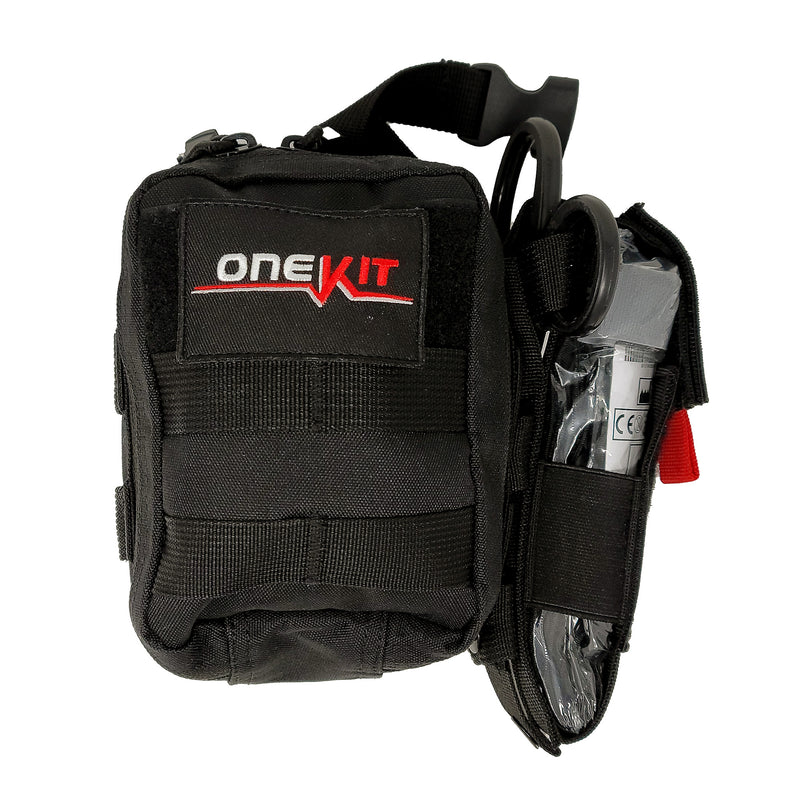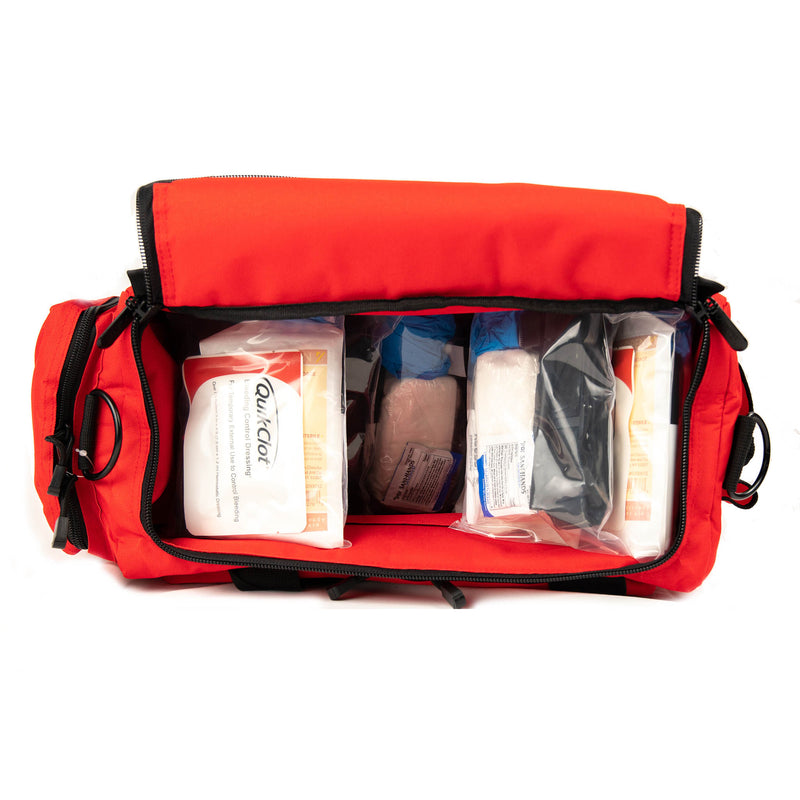Introduction
Natural disasters can strike at any time, leaving us vulnerable and in need of immediate medical attention. In such situations, having an emergency medical kit prepared is crucial to ensure the safety and well-being of ourselves and our loved ones. This article will guide you through the essential components of a comprehensive emergency medical kit, providing you with the knowledge and tools necessary to be prepared for any natural disaster.
Why is it important to have an Emergency Medical Kit?
During natural disasters, access to medical facilities may be limited or completely unavailable. In these situations, having an emergency medical kit can mean the difference between life and death. By having a well-stocked kit on hand, you can provide immediate first aid and address minor injuries before professional help arrives. Additionally, in severe cases where professional assistance is not immediately available, your emergency medical kit can serve as a vital resource to stabilize a person's condition until help arrives.
Best First Aid Kit in Texas: Choosing the Right One
When it comes to selecting the best first aid kit in Texas, there are several factors to consider. A good first aid kit should contain all the essentials needed to treat common injuries and emergencies. Look for kits that include bandages of various sizes, adhesive tape, antiseptic wipes or solution, scissors, tweezers, gloves, and pain relievers. It's also important to choose a kit that is portable and easily accessible during emergencies.
Complete First Aid Kit: Must-Have Items
A complete first aid kit should include a wide range of supplies to handle various injuries and emergencies. Here are some essential items that should be included:
Bandages (assorted sizes): These are essential for covering wounds and stopping bleeding. Adhesive tape: Used to secure bandages and dressings in place. Antiseptic wipes or solution: Necessary for cleaning wounds and preventing infection. Scissors: Used to cut bandages, clothing, or other materials in emergency situations. Tweezers: Useful for removing splinters or foreign objects from the skin. Gloves: Essential for protecting yourself and others from possible contamination. Pain relievers: Include over-the-counter pain medications such as ibuprofen or acetaminophen. Emergency blanket: Provides warmth and insulation during extreme weather conditions. CPR mask: Used to administer CPR safely and effectively.First Aid Kit Essentials: Additional Supplies
While the items mentioned above are essential, there are several additional supplies that can enhance the effectiveness of your first aid kit. Consider including the following items:
- Instant cold packs: These are useful for reducing swelling and relieving pain in case of sprains or strains. Sterile eyewash solution: Vital for flushing out foreign objects or chemicals from the eyes. Burn gel or ointment: Helps soothe and treat minor burns quickly. Splinting materials: In case of fractures or sprains, splints can help stabilize the affected area until medical help arrives. Oral thermometer: Allows you to monitor body temperature during emergencies.
Remember, it is crucial to periodically check your first aid kit and replenish any expired or used supplies.
Emergency Medical Kit for Home Safety
Our homes should be a safe haven, especially during natural disasters. Having an emergency medical kit specifically designed for home safety is essential to ensure the well-being of our family members. Here are some additional items you should consider including in your home emergency medical kit:

Basic Medical Supply Checklist
To ensure your emergency medical kit is well-stocked and prepared for any natural disaster, use this basic medical supply checklist:
- Bandages (assorted sizes) Adhesive tape Antiseptic wipes or solution Scissors Tweezers Gloves Pain relievers Emergency blanket CPR mask Instant cold packs Sterile eyewash solution Burn gel or ointment Splinting materials Oral thermometer
By having these supplies readily available, you can respond effectively to a wide range of injuries and emergencies.
Best Emergency First Aid Kit: Ready-Made Options
If you prefer the convenience of a ready-made emergency first aid kit, there are several options available. Here are some of the best emergency first aid kits on the market:
"Rescue Ready" First Aid Kit: This comprehensive kit includes all essential supplies and is suitable for both home and outdoor use. "Survival Essentials" First Aid Kit: Designed for survival situations, this kit includes additional items such as water purification tablets and a whistle. "Compact and Portable" First Aid Kit: Ideal for travel or outdoor activities, this compact kit contains all necessary supplies in a lightweight package.When selecting a ready-made kit, ensure it meets your specific needs and preferences.

Essential Kit for First Aid: Customization Tips
While ready-made kits offer convenience, it's important to customize them to suit your individual needs. Consider the following tips when personalizing your essential first aid kit:
Assess your environment: If you live in an area prone to certain types of natural disasters, such as hurricanes or earthquakes, tailor your kit to address those specific risks. Take into account special needs: If you have family members with specific medical conditions or allergies, make sure to include any necessary medications or treatments. Consider the number of people: If you have a large household or frequently host guests, ensure your kit has enough supplies to accommodate everyone.By customizing your kit, you can ensure it is tailored to your unique circumstances and requirements.
FAQs
Q: How often should I check and restock my emergency medical kit?- A: It is recommended to check and restock your emergency medical kit at least once every six months. This ensures that all supplies are up-to-date and in good condition.
- A: It is not recommended to use expired medications, as their effectiveness may be compromised. Replace any expired medications promptly.
- A: Depending on your specific needs and circumstances, you may want to include items such as allergy medication, personal protective equipment (PPE), or specialized equipment for infants or elderly family members.
- A: Yes, it is highly recommended to undergo training in first aid and CPR. This knowledge will enable you to respond effectively during emergencies and potentially save lives.
- A: Store your emergency medical kit in a cool, dry place that is easily accessible during emergencies. Avoid storing it in areas prone to extreme temperatures or moisture.
- A: Yes, creating multiple kits for different locations can be beneficial. Consider having kits at home, in your car, and at your workplace to ensure preparedness wherever you go.
Conclusion
In conclusion, preparing an emergency medical kit for natural disasters is a crucial step in ensuring the safety and well-being of yourself and your loved ones. By selecting the best first aid kit in Texas, stocking it with essential supplies, First Aid Kit for Home Safety and customizing it to meet your specific needs, you can be prepared for any emergency situation. Remember to regularly check and restock your kit to ensure its effectiveness. With a well-prepared emergency medical kit, you can face natural disasters with confidence, knowing that you are equipped to handle any situation that may arise. Stay safe and be prepared!